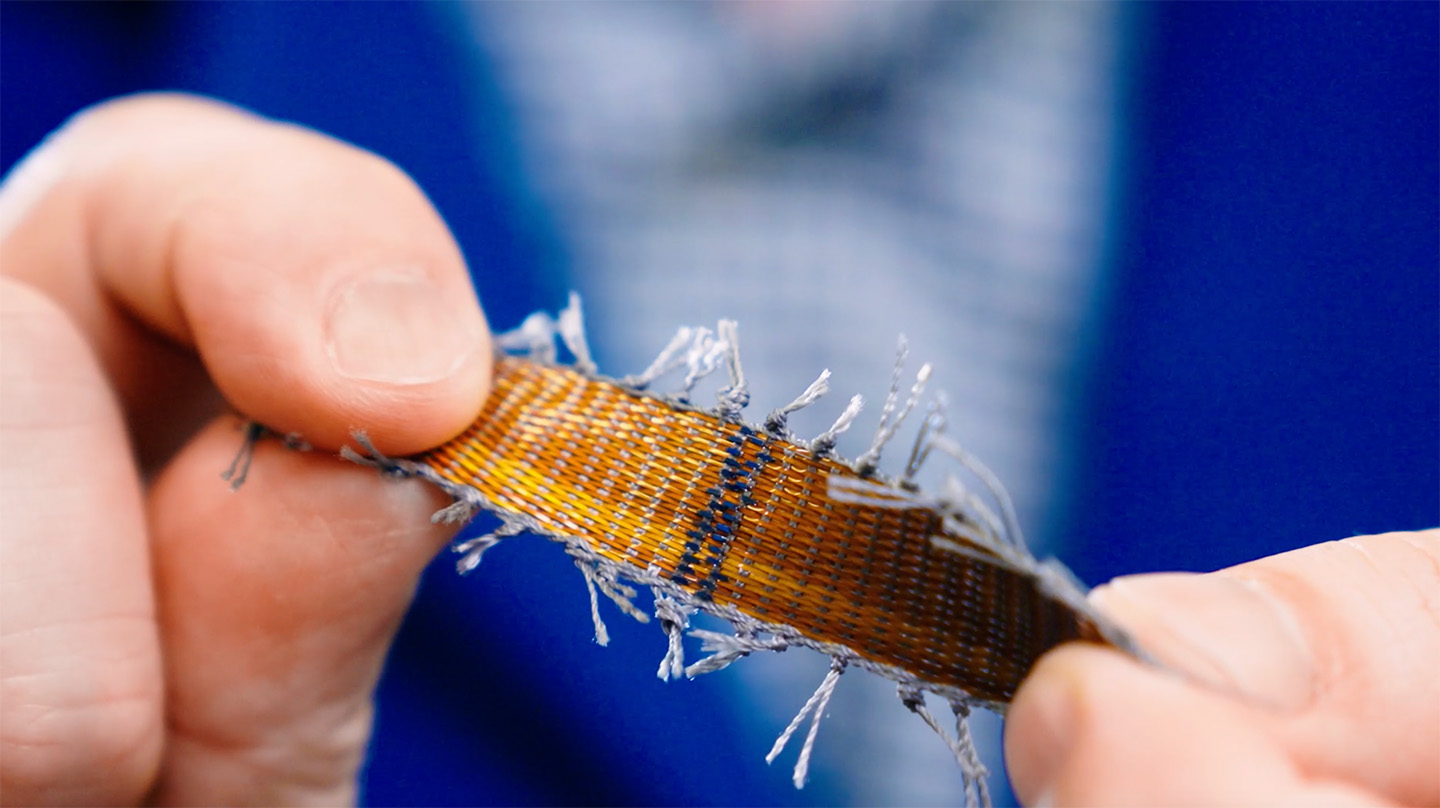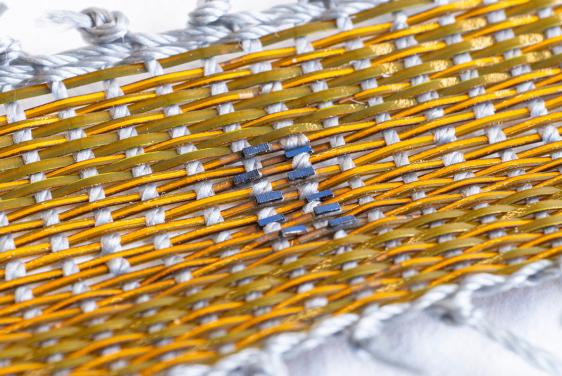Press Release
Breakthrough Process Creates Next Generation of Powered Wearable Fibers
Researchers from the Johns Hopkins Applied Physics Laboratory (APL) in Laurel, Maryland, have established new, scalable methods of developing battery- and solar-powered fibers, making it theoretically possible for electrical energy to be harvested from, and stored in, the clothing people wear. These fibers could power high-performance wearable electronics that breathe, stretch and wash just like conventional textiles.
This development in fiber power sources — submillimeter-thin battery and photovoltaic strands that could be woven directly into fabrics — opens up a new world of wearable electronics and smart textiles. Instead of carrying a heart monitor with bulky batteries, a patient could wear a shirt that has battery- and solar-powered fibers knit into it. Fiber-powered clothing could be heated to keep a person warm in cold environments, or laced with battery- and solar-powered fibers to provide soldiers with hands-free audio and video recording in the field.
“As demands for electronic textiles change, there is a need for smaller power sources that are reusable, durable and stretchable,” said Konstantinos Gerasopoulos, assistant program manager for physics, electronic materials and devices at APL and lead investigator of this project. “Our vision is to develop solar harvesting fibers that can convert sunlight to electricity and battery fibers that can store the generated electricity in the textile.”



